- Aesthetic appearance. The presence of a huge range of colors, textures and options for design and application of patterns. It will help to create any interior and decoration of your home.
- Moisture resistant. Plaster has the ability to repel moisture. Protects the house from moisture. Water does not reach the heat-insulating layer, which allows to extend its service life.
- High level of thermal insulation. Protects your home from wind and frost, as well as seasonal temperature changes.
- Easy mounting system. Applying plaster is quite simple, for this you do not need to call a specialist, everything can be done independently.
- Has many varieties, specially designed for private houses from different building materials.
- Clinker tiles.
- Facing and special facade brick. The part of the material that will be on the front side can be matte or glossy, as well as corrugated.
- Large selection of designs.
- High level of strength.
- Not afraid of moisture.
- Easy to clean, does not attract dust and dirt.
- Unaffected by aggressive chemicals.
- Easily withstands temperature changes.
- Has a long service life.
- Due to its maximum strength, the material is very durable.
- Abrasion resistant.
- It repels moisture as much as possible, due to which it has a high level of frost resistance.
- Choosing porcelain stoneware, you can be sure that you will not be disturbed by various cracks and chips on the surface.
- Easily tolerates temperature changes.
- It is fireproof, does not ignite even at maximum heating.
- Does not fade in the sun, retains its color throughout the entire period of operation.
- Has an eternal life.
With what material and how the facade will be lined, the owner of the house most often thinks over another early stages construction. It is necessary for the final appearance facade, combined with the landscape of the house, its details, the roof and the general style. In addition, the finishing material should well insulate the walls of the house, soundproof the room, and also protect well from various weather conditions, including wind, humidity and sudden changes in temperature.
Finishing the facade of the house should be of high quality, with protection against mold, fungus and other microorganisms. The material must be hygienic, and not cause cracks, chips, which will significantly spoil the appearance. Therefore, it is necessary to carefully select the finishing material, and focus on the quality of the product. All materials for the facades of private houses differ in their technical specifications and properties.
In the photo, the combined decoration of the facade of the house - stone, plaster, wood inserts
Secrets when choosing a finishing material
Materials for finishing the facades of private houses should insulate the walls with high quality and protect them from various destructions. It is necessary to choose a material based on your capabilities, taste and novelties of manufacturers. If your house is built of ceramic blocks, then plaster is best, before applying which it is best to additionally insulate the house.
The choice of plaster for a private house from foam blocks will help to avoid unnecessary spending on adhesive bases and level the walls. For wooden houses, plaster is not the best choice, especially if the material shrinks, the plaster will begin to crack. But if you all decide to use this particular finishing material, then it is best to use expansion joints.
For wooden private houses, best material there will be panels for finishing facades or siding, it does not shrink and reduces the fire hazard of wooden houses. For the basement of private houses, it is best to use decorative rock, it makes the design complete and stylish.
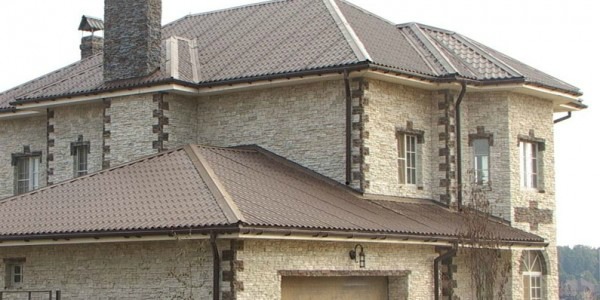
Facade of a private house lined with decorative stone
If the decorative stone is not your material, then it can be replaced with anti-vandal plaster, which is not damaged and will look pretty good. Let's look at the advantages of each finishing material.
Facing materials for facades
Decorative plaster
This option is one of the oldest, but reliable facing materials for exterior finish. New versions are produced annually, more advanced, high-quality and durable plaster, which is suitable for wall cladding from a wide variety of materials. Due to its availability and a wide choice of colors, textures and design solutions, this material is in great demand today.

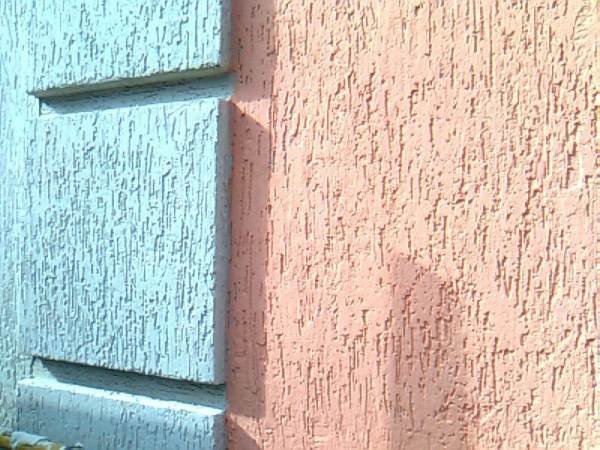

Material advantages:
Clinker tiles or bricks
This material, outwardly looks like a brick, and is quite often used for exterior decoration. You can choose for yourself any color and texture of the material, since several hundred of its options are available on the market. Such material is made of clay, and the color is given with the help of various dyes. It is completely natural and eco-friendly.
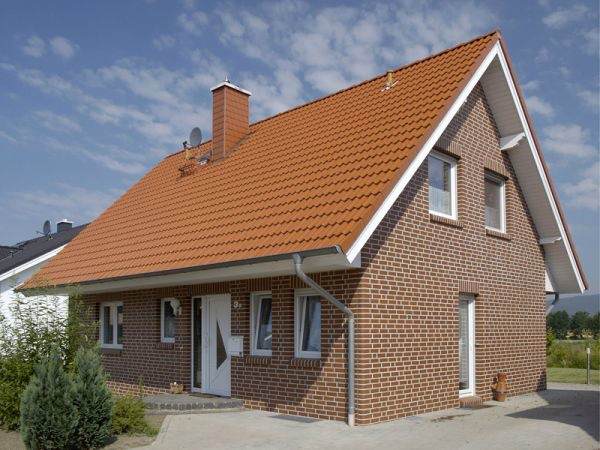
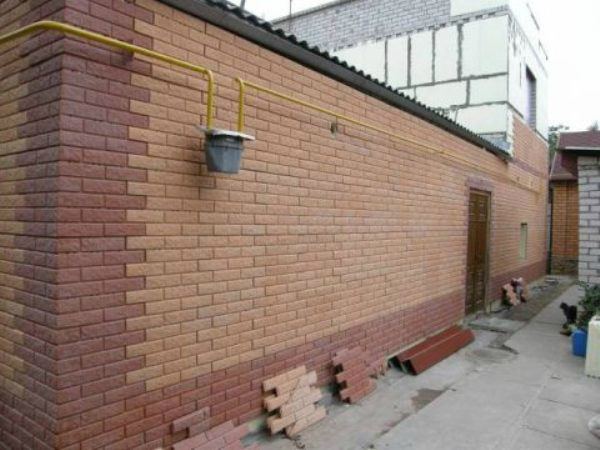
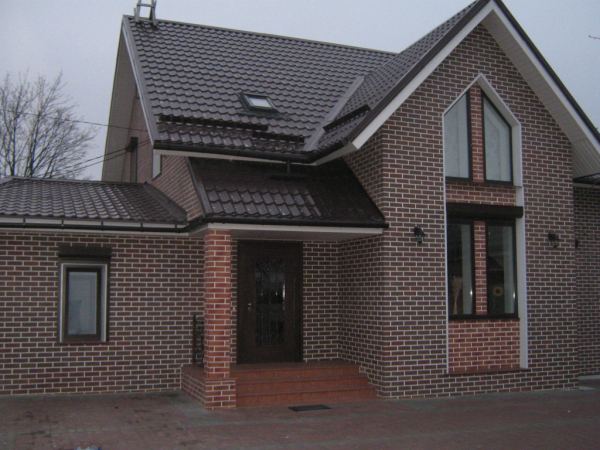
It is very important to order material with a margin so that the color does not differ during installation.
There are several varieties of it that are actively used:
Material advantages:
Porcelain stoneware
It is one of the best decorative materials for outdoor work in private homes. Such material does not allow the owners to apply drawings or patterns, but its appearance makes the house stylish and beautiful without it. A huge range of material designs to choose from, a variety of texture solutions and an extensive range of colors. There is porcelain stoneware, which is made under a tree or stone, which cannot be distinguished from the original. If you show a little imagination, then using this material you can make an original and beautiful design.
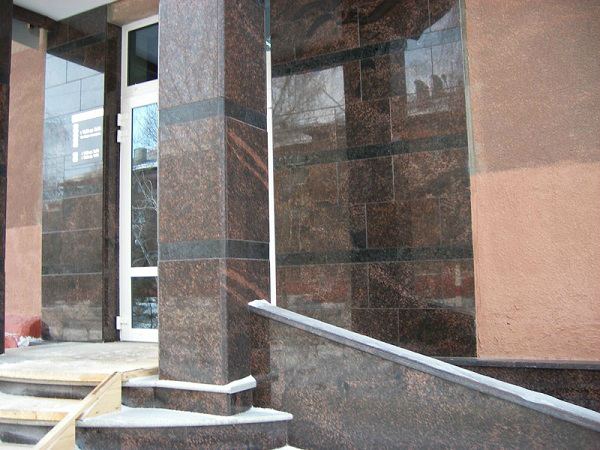
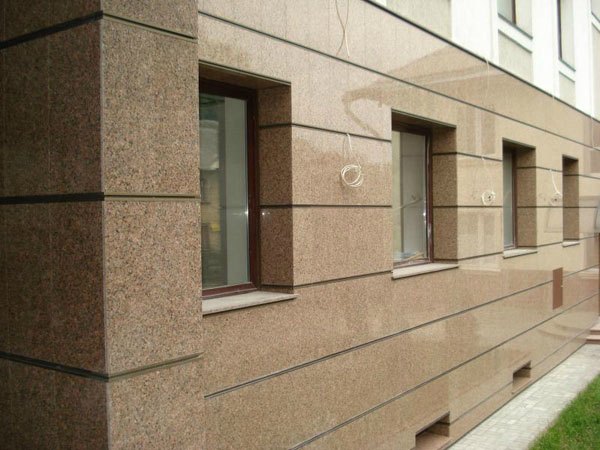
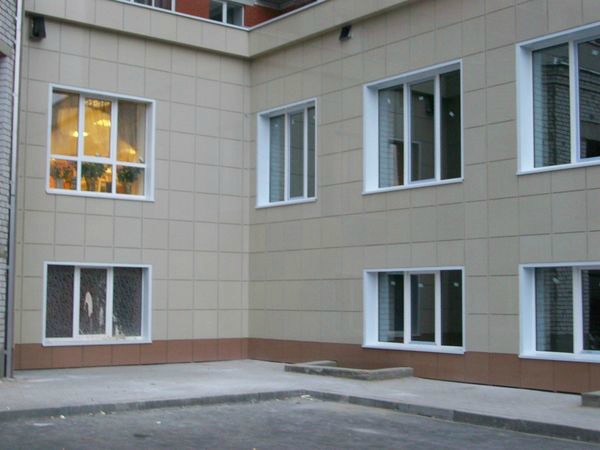
Material advantages:
The disadvantages include a rather complicated installation system and compliance requirements. special technology application.
Siding
It's special decorative panels for outdoor work and protection of facades, which come in different types and can be made of metal, wood and plastic. Facing the facade of the house with facade panels is one of the most beautiful. It has a simple mounting system, quite light and easy to install.
Vinyl siding
Made of plastic and accurately imitates various materials such as wood, stone, glass, etc. There is a huge selection of models vinyl siding, for every taste. It is quite light, does not weigh down the walls, is resistant to any weather conditions and mechanical stress.
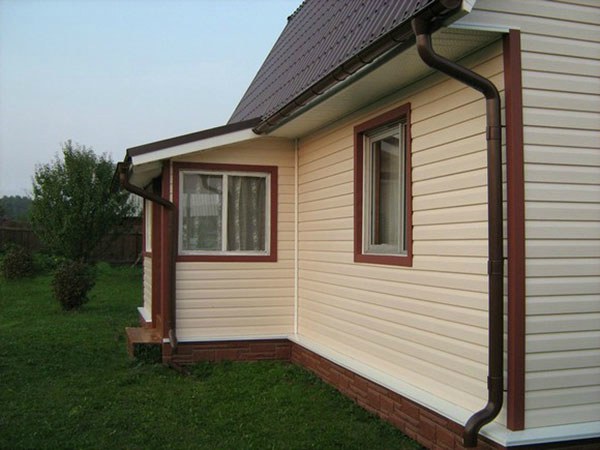

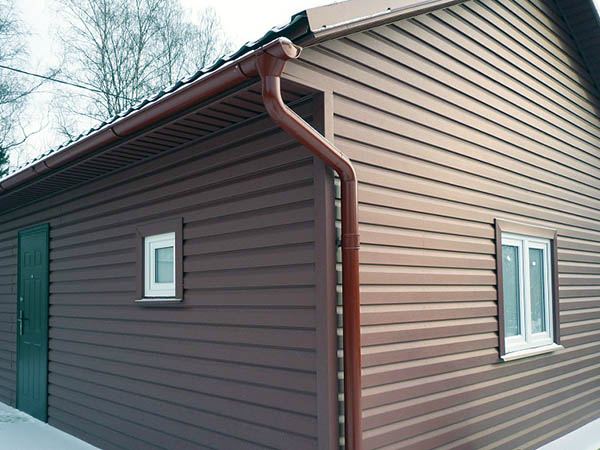
wood siding
It is made from processed or dried wood, which is pre-treated with special antiseptics. Such siding looks very aesthetically pleasing, beautiful, environmentally friendly, but rather short-lived and requires constant care.
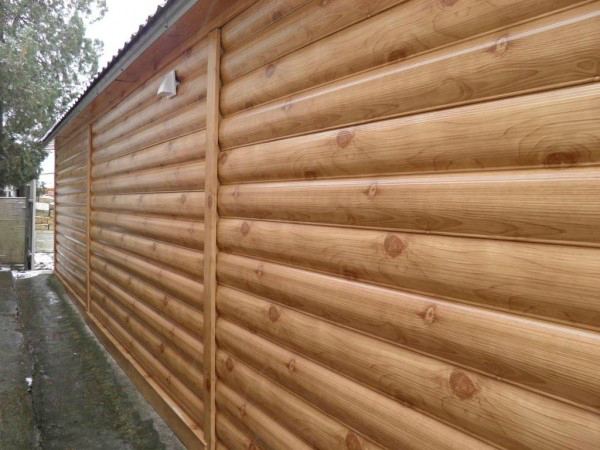
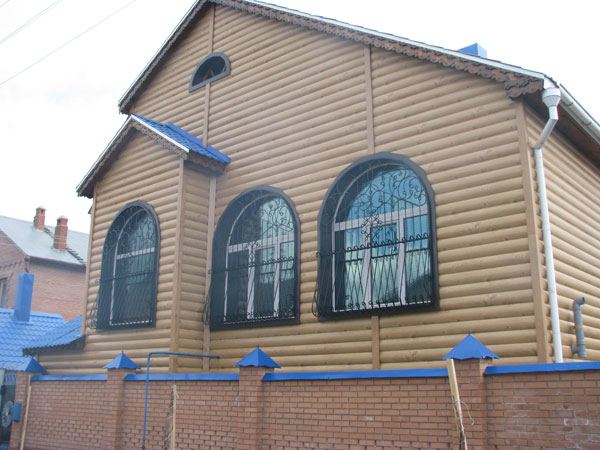
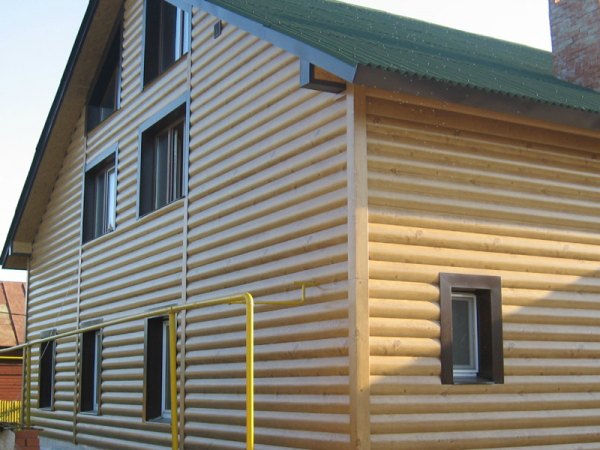
The modern range of materials for finishing the facades of private houses is so huge that only professionals can freely navigate this variety. It is difficult for a simple layman to understand the names and compositions, it is even more difficult to choose a high-quality finish for a specific wall material, to take into account all the nuances associated with insulation and ventilation.
Therefore, more and more facade work is trusted only by professional builders. But you can figure it out on your own, thereby saving a considerable amount of money.
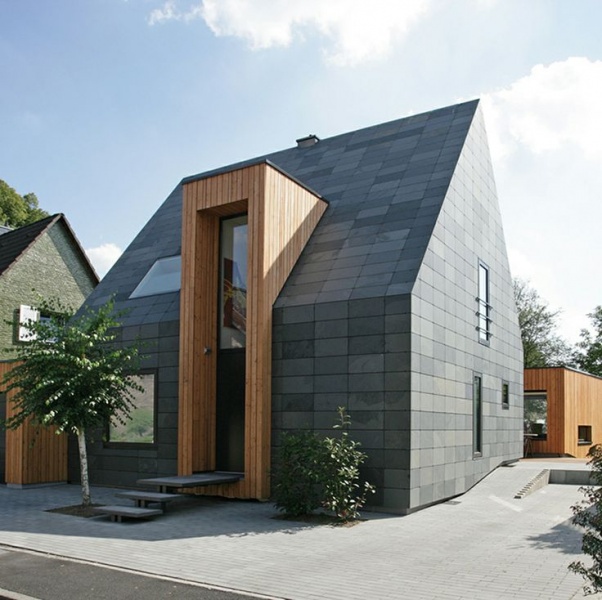
This article will consider the most popular materials for facade decoration, and will also talk about the most modern materials that have appeared on the construction market in recent years.
What is it, the ideal facade
Not all materials are suitable for exterior decoration of the house. After all, the outer facing layer takes on all the loads: the influence of weather conditions, temperature changes, the scorching sun, wind, pressure from the supporting structures and much more.

In order to adequately withstand all of these factors, the exterior finish must have a number of special qualities:
- The facade should be beautiful, because it is the face of a private house. The appearance of the finish must be in harmony with the surrounding area and the structure of the building.
- The finish must be durable, because it simply must last at least 15-20 years in order to be replaced during the next overhaul at home.
- Weather conditions such as frost, intense heat, rain, snow and wind are not dangerous for high-quality facade finishing. The wall covering should not crack, peel off, lose its external attractiveness, burn out, etc.
- It is desirable that the facade coating material has the ability to "breathe", that is, it is breathable. If the selected finish does not have this quality, it will be necessary to arrange ventilation of the facade, and this is an additional cost and time.
- A good facade plays the role of a heater, it retains heat without releasing it outside the walls of the house. Modern finishing materials, as a rule, meet such thermal requirements.
- In no case, the facade decoration should not burn or emit toxic substances during the melting process - the safety of the residents of the house depends on this.
- Microorganisms, fungi or insects must not spread in the finishing material. After all, it is mold, bugs and other troubles that become the root cause of the appearance of microcracks, and subsequently the complete destruction of the facade.
![]()
Attention! Since almost every house has the ability, over time, to shrink, to change its geometry a little, the facade finish must be tear-resistant, that is, a little plastic. As a result, such a facade will compensate for small cracks or subsidence of the walls.
What are facades
Facade structures and their type depend on the material from which the house is built, on the climate in the region, and on the wishes of the owner.
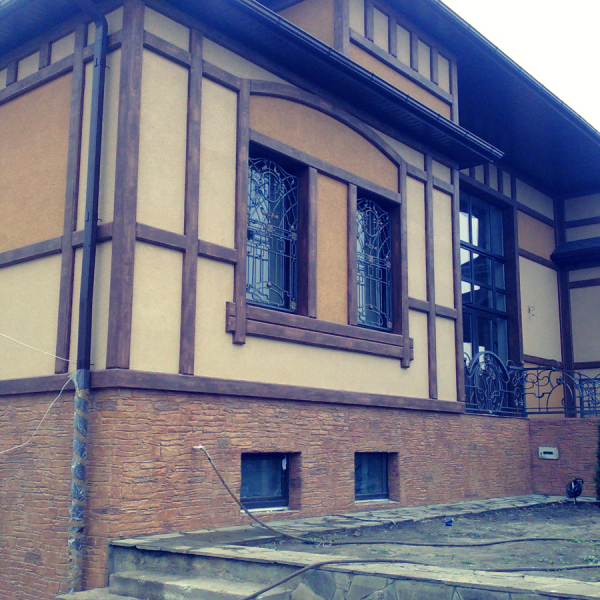
All types of facades, in accordance with the method of installation, are usually divided into two large groups:
- "wet" facade - one that is mounted using special building mixtures (adhesive or cement compositions, etc.)
- "Dry" facades are attached to the house using mechanical devices, such as fasteners, special systems and additional equipment.
Important! The “wet” type finish is solid, has no gaps and cold bridges. But it is possible to mount such facades only at positive temperatures and in dry weather. The advantage of a “dry” facade is independence from external conditions, but such a finish will never be as solid as a “wet” type facade.
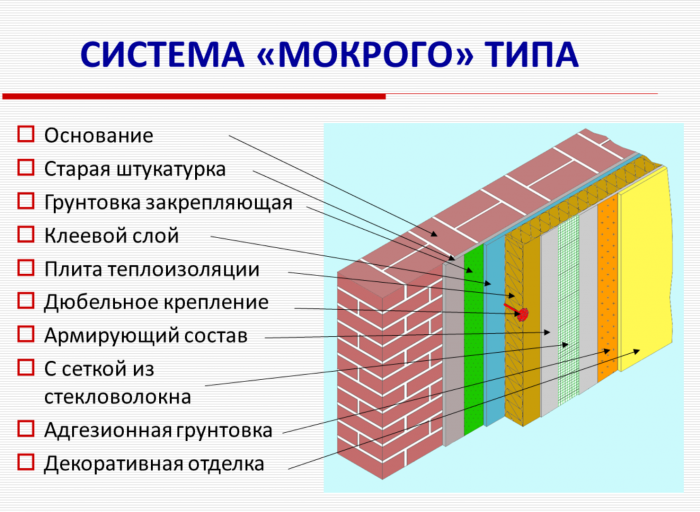
For those materials that do not allow air to pass through, that is, they do not know how to "breathe", ventilation is necessary. If the ventilation of the facades is not provided, in the end, the walls will become wet, condensation will accumulate on the insulation, which will lead to rotting of the material and loss of its insulating properties.
Depending on whether there is a gap between the finish and the wall of the house, the facades are divided into:
- ventilated - when there is an air gap between the wall and the exterior;
- non-ventilated attached directly to the wall or to the insulation.
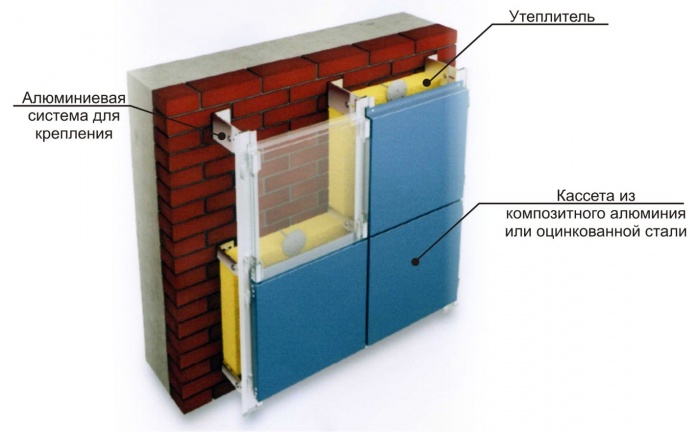
Advice! The type of facade structure is very important. It is necessary to decide on its option at the design stage, even before purchasing the facing material.
Facade plasters
One of the most ancient ways of exterior decoration is wall plastering. Modern facade plaster has a lot useful properties, well protects the walls from external factors and decorates any building.

The advantages of facade plaster are many:
- rapid improvement in the appearance of a private house;
- the possibility of painting the plaster in any shade;
- moisture resistance;
- resistance to ultraviolet radiation;
- ability to endure frost and heat;
- good thermal insulation qualities;
- vapor permeability, that is, the ability to "breathe";
- ease of installation and low cost.
Attention! Plaster will not protect the walls from impacts and other mechanical damage. This finish is quite fragile and must be handled with care.
Mineral facade plaster
The most popular finish is mineral plaster. Such material provides the facade with sufficient attractiveness, as it has a very large range of colors and textures.
The facade of mineral plaster does not fade in the sun, microorganisms do not start in it, which means that the walls will not become moldy. Mounting mineral plaster on the walls of the house is very simple, installation can be done both on bare walls and on a layer of insulation.
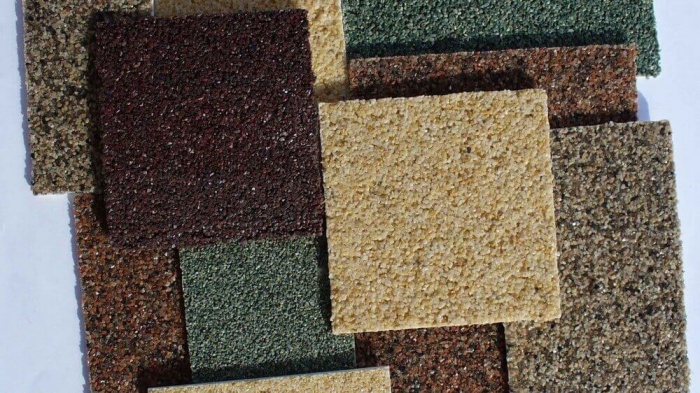
The mineral composition is responsible for the incombustibility of the finish, therefore given type facade is a good solution for houses, the insulation of which was carried out with flammable materials.
The main disadvantage of mineral plaster for facades is its low elasticity - cracks and chips quickly appear on the walls. This finish will last from 10 to 18 years.
Advice! You should not use a mineral facade on the walls of newly built houses - the building must undergo a shrinkage process.
Acrylic plaster for facades
This type facade decoration very elastic, so cracks on the walls of the house, most likely, never form. Another plus of acrylic finishes is durability, because it will last at least 20 years.
This material is moisture resistant, not afraid of frost and temperature changes, does not fade in the sun. The cost of acrylic plaster is slightly higher than mineral. The main disadvantage of such a facade is its flammability, so use plaster together with mineral wool, for example, is not possible.

Attention! Acrylic facades attract dust very strongly, which easily clogs into the pores of the finish. It will be difficult to wash such walls, so it is not recommended to use the finish in regions with high level air pollution.
silicate plaster
The most durable type of facade plaster is silicate finish. It is made on the basis of potash glass; such a facade will serve for a very long time - at least 30 years.
This finishing material has many advantages:
- it does not burn;
- does not attract dust;
- stretches well;
- easy to clean;
- does not deteriorate under the influence of moisture, temperature and ultraviolet;
- retains heat very well.

Important! There are also disadvantages to silicate plaster for facades: it is very expensive, it quickly hardens (therefore, it will not work to apply the material to the walls on its own), it is mounted only on a special primer.
Silicone plaster for the facade of a private house
The most expensive, but also the most durable option for finishing exterior walls with plaster. Silicone material does not burn, is easy to apply, absolutely does not absorb dirt, can be mounted on any type of insulation, has a long service life.
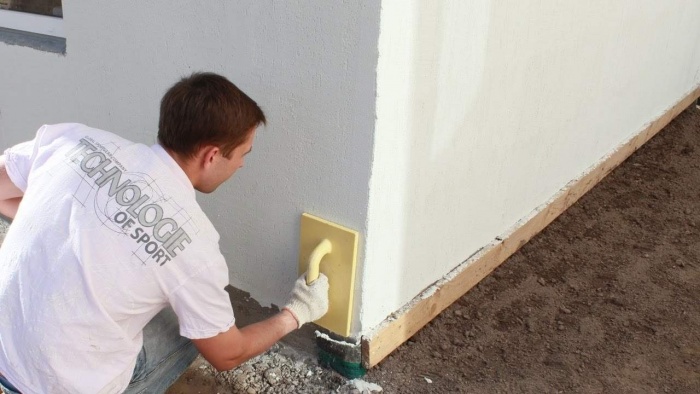
Silicone finish is applicable in all climates and in the most polluted cities.
stone finish
Stone walls are the most durable and decorative solution of all existing ones. The cost of natural stone is very high, so this finish is often combined with other types or replaced with artificial stone.

Decorative (artificial) stone is much cheaper, and weighs much less, which is important for facade decoration. The advantages of stone walls are obvious:
- the facade is very durable, almost never needs repair;
- the high aesthetics of this option for finishing the facade of the house is beyond doubt, the stone fits perfectly into any style;
- the material is environmentally friendly;
- the stone does not deteriorate from moisture, sun and cold;
- the walls of the house are very resistant to mechanical damage and wind load.
Artificial stone is able to imitate any natural rocks (from slate and sandstone to marble and granite), has a wide palette, and is practically not inferior in quality to natural. But the cost of artificial stone finish, will still be very high.

Important! You can mount a stone facade on any surface, there are options for its use on ventilated structures.
Brick cladding
For finishing facades, they use not a simple building brick, And his decorative types. Each type facade brick their pros and cons, but all materials from this group share common qualities:
- excellent appearance;
- mass of textures and colors;
- different shapes and sizes;
- good resistance to negative manifestations of the external environment.
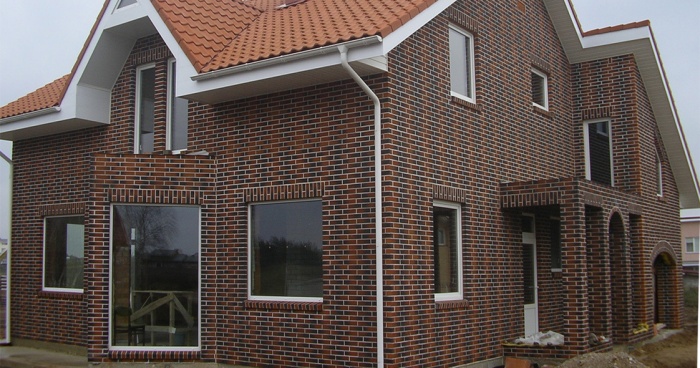
Depending on the type of raw material, there are several main types of facade bricks:

Attention! Any brick must be able to lay. Due to improper installation, the facades are not very attractive in appearance, and they are destroyed quite quickly. Therefore, it is recommended to involve professionals.
Ceramic granite facades
Porcelain stoneware based on quartz sand and clay is very durable, but also quite heavy. For facades, porcelain tiles are usually used, the thickness of which is from 12 to 16 mm.

This finish is very beautiful, textured, looks good on any walls. The material does not absorb moisture at all, therefore it does not collapse and does not change color. But the tile is very expensive, so it is used quite rarely.
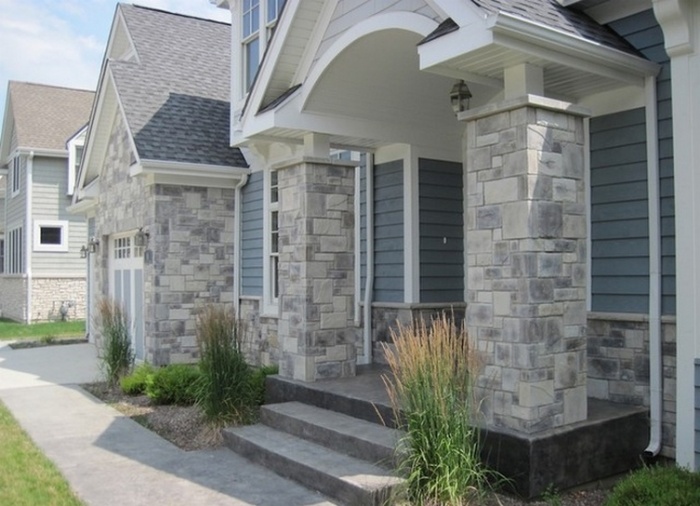
Important! Installation of porcelain stoneware cannot be carried out on cement mortars, since the tile is hygroscopic. For work, you will need special adhesive mixtures or a metal frame.
Facade siding
Decorative siding is one of the most popular facing materials. It is inexpensive, with excellent decorative qualities and easy installation. In addition, facades sheathed with siding are very durable (up to 50 years), they retain heat well. Often siding is used to decorate very old houses - the structure is instantly transformed.
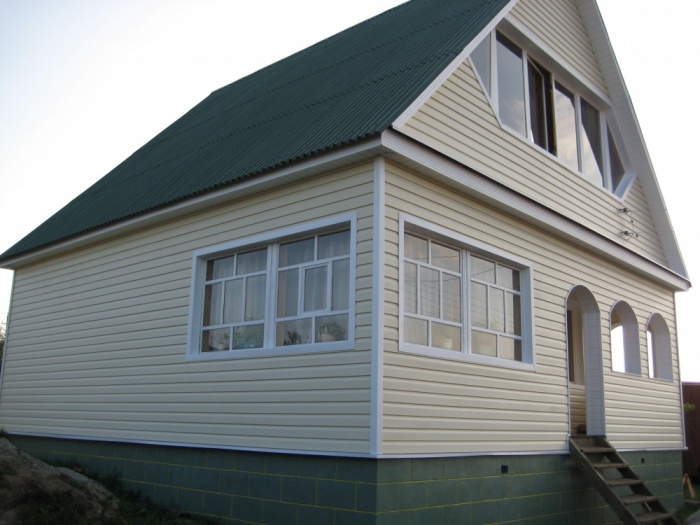
There are several types of outdoor siding:

Attention! Facade material such as siding is usually installed in a ventilated way, as it does not allow air to pass through.
The newest materials for finishing facades
It is necessary to familiarize yourself with less popular, but no less high-quality, types of finishing the facades of private houses. There are few such options:
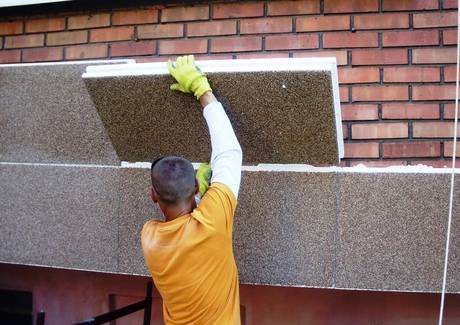
Finishing the facades of houses modern materials the photo of which is presented in this article has one general trend: the main purpose of the cladding today is to decorate the house.
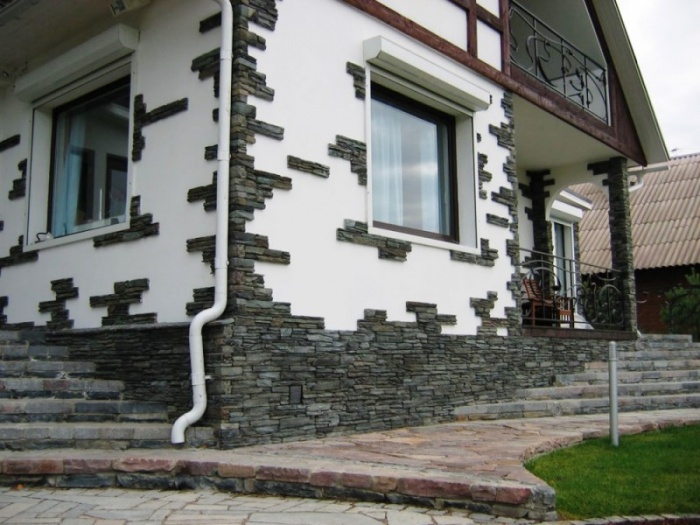
But do not forget about other tasks of finishing the facade, such as protecting the walls and structures of the building from external factors. Finishing is required to contribute to the insulation of the house, its sound insulation, and it must also be durable. For those who plan to decorate the facade of their house on their own, simple installation and a minimum of additional elements will be important.
The facade of the house is, as it were, its clothes, which give the impression of the people living in it, their tastes and condition. The same type of material is used in different options finishes. There are finishing materials for the facade of wooden houses, brick, concrete buildings. Their choice is often influenced by the style of construction, which in turn depends on the climate, landscape and appearance of neighboring buildings.
Types of finishing materials for the facade of the house
- Wood for facade decoration. Against the backdrop of the natural beauty of a forest, river or lake, a house lined with natural materials, especially if you opted for country style. A tree, for example, is not only an external attraction, but also a welcome warmth in the cold season. It is possible to maintain the appearance of the facade in the proper form by periodically applying substances to its surface that minimize disadvantages such as sensitivity to moisture, fire and other environmental influences. The most common trim is clapboard, or siding.
- Facade stone. A sense of security arises near natural stone. The facades of houses lined with it are most liked by fans of Provence, country styles, or people who skillfully combine different directions.
- Artificial stone for the facade. Modern technologies have allowed a natural stone change to artificial. Many positive qualities, including lightness, durability, wide range of colors and relatively low price, made it very popular. Finishing materials under the stone for the facade of the house do not require special preparation of the walls if they are made of concrete or brick. Other surfaces must be primed or plastered, especially when their flowability is observed.
- Clinker and concrete facade panels. You can protect the house from the cold with clinker or concrete products, in which fiberglass is added. Panels made of polymer concrete look like stone or brick. They also have increased durability.
- External plaster. Finishing materials for the facades of private houses, which are different kinds plasters are always an original stylistic decision. The abundance of invoices and colors will help to make the appearance of your home not like any other. Mixtures are of mineral, polymer, silicone or silicate origin, which has the greatest number of advantages. The bark beetle plaster looks original, the decorativeness of which is given by marble chips.
- Siding. Finishing materials for the facade of the house include a type of cladding such as siding. Among all manufactured panels, vinyl are the most versatile. Steel or aluminum, due to their disabilities, are not used very often. Siding can be a stand-alone decorative element or mounted on top of a layer of thermal insulation, which affects its durability in the same way as fasteners and sheathing. It is great for a house with a weak foundation.
- Facade tiles. In the cladding of the house, facade tiles are quite common. Before you decide to change the look of the house with it, you need to consider that this material is quite heavy and has varying degrees of vapor permeability.
 |




















